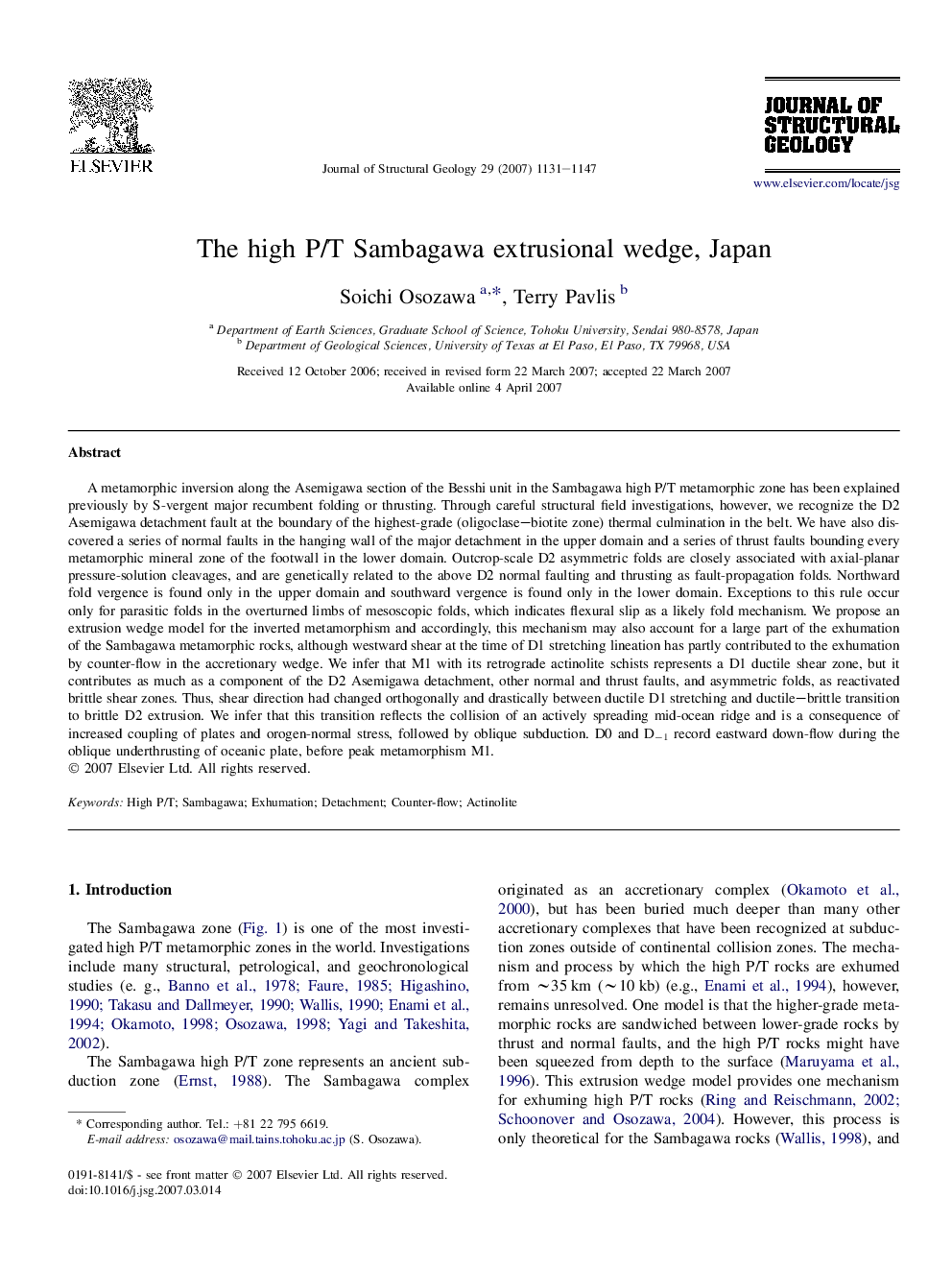| کد مقاله | کد نشریه | سال انتشار | مقاله انگلیسی | نسخه تمام متن |
|---|---|---|---|---|
| 4733907 | 1357059 | 2007 | 17 صفحه PDF | دانلود رایگان |

A metamorphic inversion along the Asemigawa section of the Besshi unit in the Sambagawa high P/T metamorphic zone has been explained previously by S-vergent major recumbent folding or thrusting. Through careful structural field investigations, however, we recognize the D2 Asemigawa detachment fault at the boundary of the highest-grade (oligoclase–biotite zone) thermal culmination in the belt. We have also discovered a series of normal faults in the hanging wall of the major detachment in the upper domain and a series of thrust faults bounding every metamorphic mineral zone of the footwall in the lower domain. Outcrop-scale D2 asymmetric folds are closely associated with axial-planar pressure-solution cleavages, and are genetically related to the above D2 normal faulting and thrusting as fault-propagation folds. Northward fold vergence is found only in the upper domain and southward vergence is found only in the lower domain. Exceptions to this rule occur only for parasitic folds in the overturned limbs of mesoscopic folds, which indicates flexural slip as a likely fold mechanism. We propose an extrusion wedge model for the inverted metamorphism and accordingly, this mechanism may also account for a large part of the exhumation of the Sambagawa metamorphic rocks, although westward shear at the time of D1 stretching lineation has partly contributed to the exhumation by counter-flow in the accretionary wedge. We infer that M1 with its retrograde actinolite schists represents a D1 ductile shear zone, but it contributes as much as a component of the D2 Asemigawa detachment, other normal and thrust faults, and asymmetric folds, as reactivated brittle shear zones. Thus, shear direction had changed orthogonally and drastically between ductile D1 stretching and ductile–brittle transition to brittle D2 extrusion. We infer that this transition reflects the collision of an actively spreading mid-ocean ridge and is a consequence of increased coupling of plates and orogen-normal stress, followed by oblique subduction. D0 and D−1 record eastward down-flow during the oblique underthrusting of oceanic plate, before peak metamorphism M1.
Journal: Journal of Structural Geology - Volume 29, Issue 7, July 2007, Pages 1131–1147